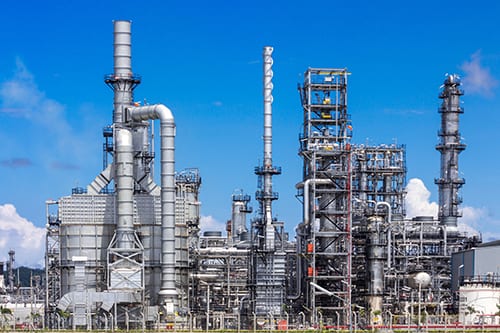The Problem
A large chemical plant in the Gulf Coast was feeding phosphate-based corrosion inhibitors to protect their heat exchangers with skin temperatures in excess of 160°F. Because phosphate (PO4) can be difficult to control, the plant suffered from both corrosion caused by underfeeding PO4 and severe phosphate deposition caused by overfeeding PO4. These issues hindered the reliable operation of the cooling systems, affecting the plant’s operating performance. Plant personnel had to regularly clean the heat exchangers, resulting in production loss caused by downtime.
In 2015, the plant reached out to ChemTreat for help.
The Solution
In late 2015, ChemTreat started implementing proprietary non-phosphate, non-zinc, non-fouling FlexPro CL5685 technology to mitigate the corrosion and scaling issues at the plant. This resulted in dramatic improvement of corrosion rates and heat transfer efficiency in the heat exchangers.
After a year of using this technology, the equipment inspection during the turnaround cycle in 2017 showed much cleaner-looking heat exchangers. The iron and copper in the tower had also been reduced, indicating FlexPro was providing adequate corrosion and scale inhibition.
However, some of the inspected heat exchangers had a few surfaces that were not passivated completely.
Based on these findings, ChemTreat implemented next-generation FlexPro CL5685 technology with a combination of anodic and cathodic inhibitors for steel and halogen stable triazole technology for copper.
This further improved the corrosion performance of the heat exchangers and resulted in clean heat exchanger surfaces thanks to the non-fouling nature of FlexPro technology.
Iron and copper levels were maintained at historically low levels after FlexPro application.

The Results
The following images show the comparison of heat exchangers when treated with a competitive, PO4-based technology during the 2015 turnaround and ChemTreat FlexPro technology during the 2018 turnaround cycle.
Since implementing FlexPro at this large chemical plant, the following results have been achieved:
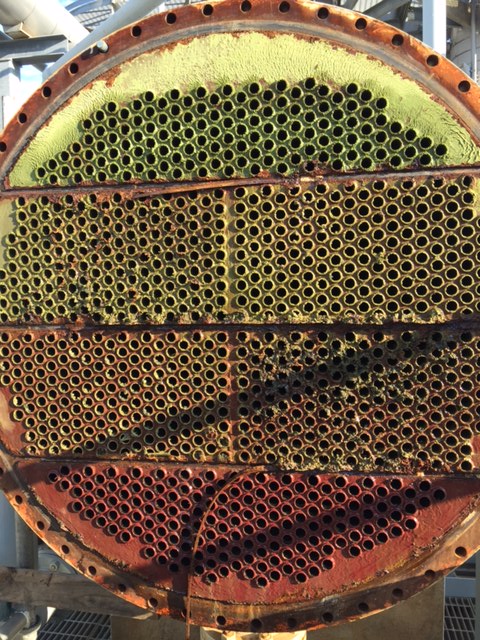
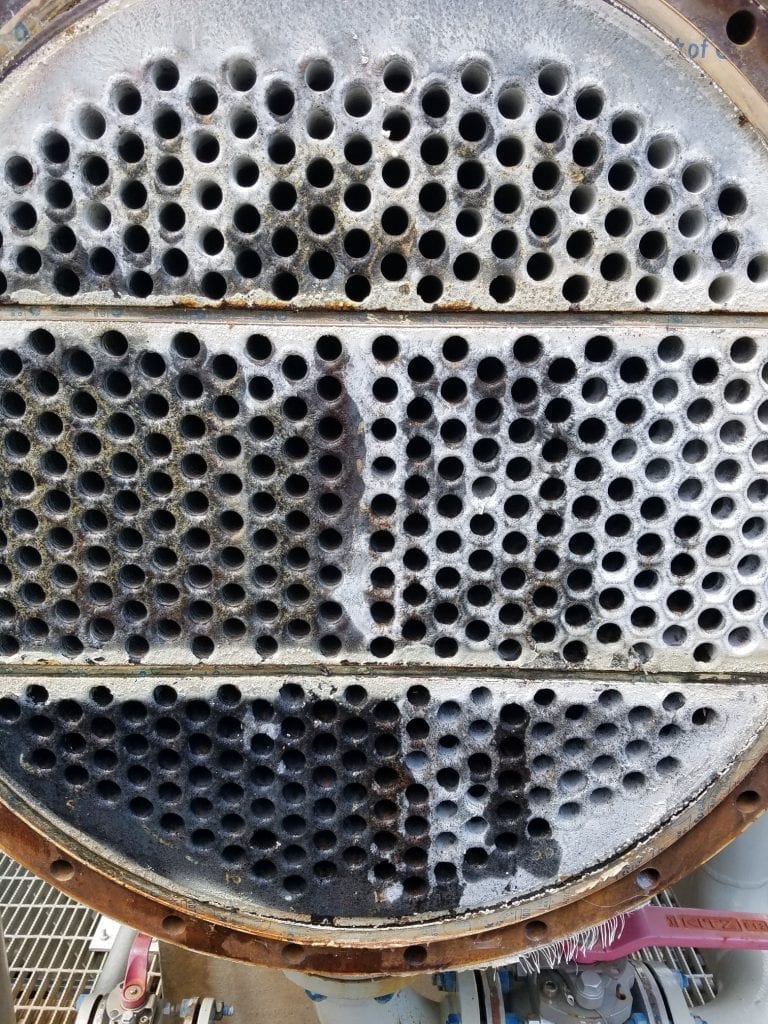
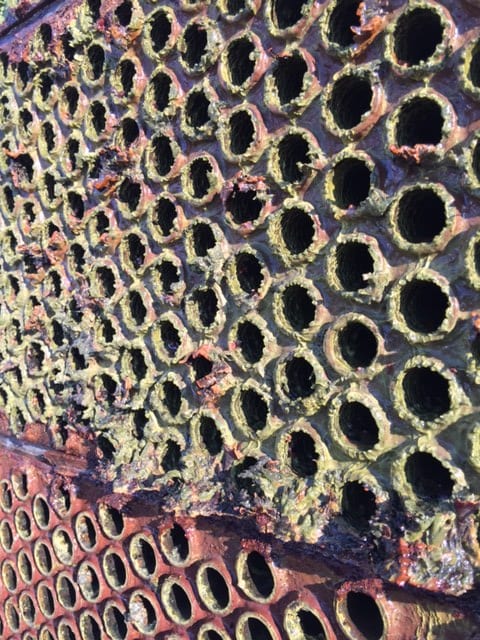
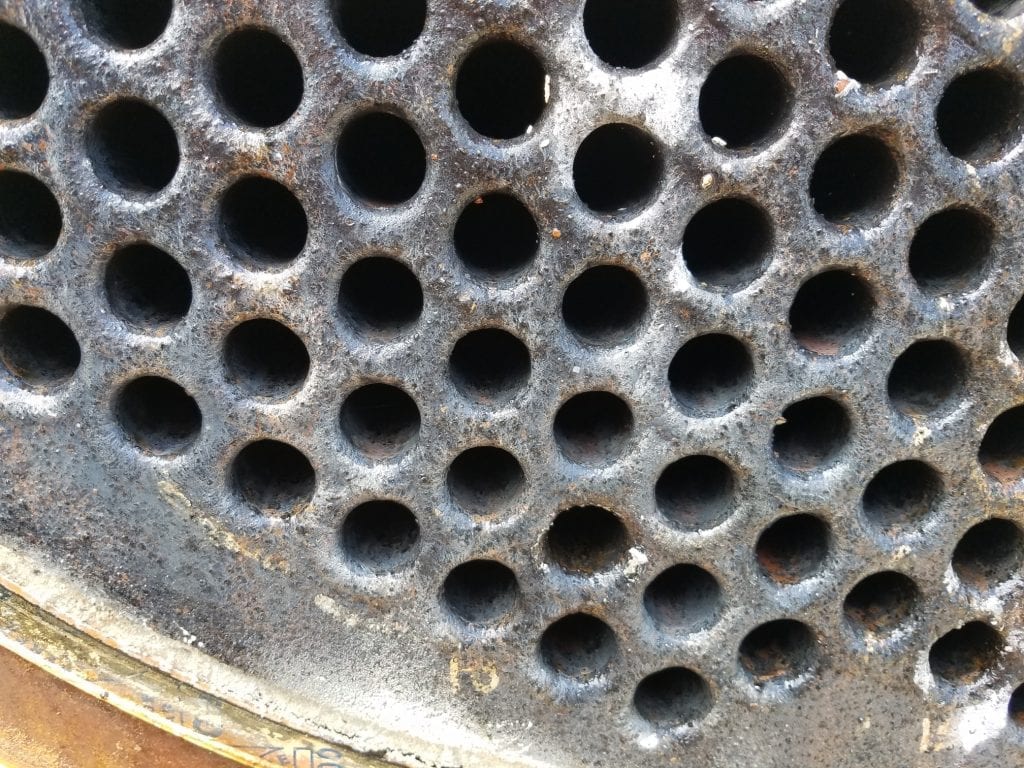
These pictures illustrate how the competitive PO4-based treatment resulted in severe phosphate deposition and possible biofouling. ChemTreat’s FlexPro resulted in heat exchangers free of corrosion and scaling.
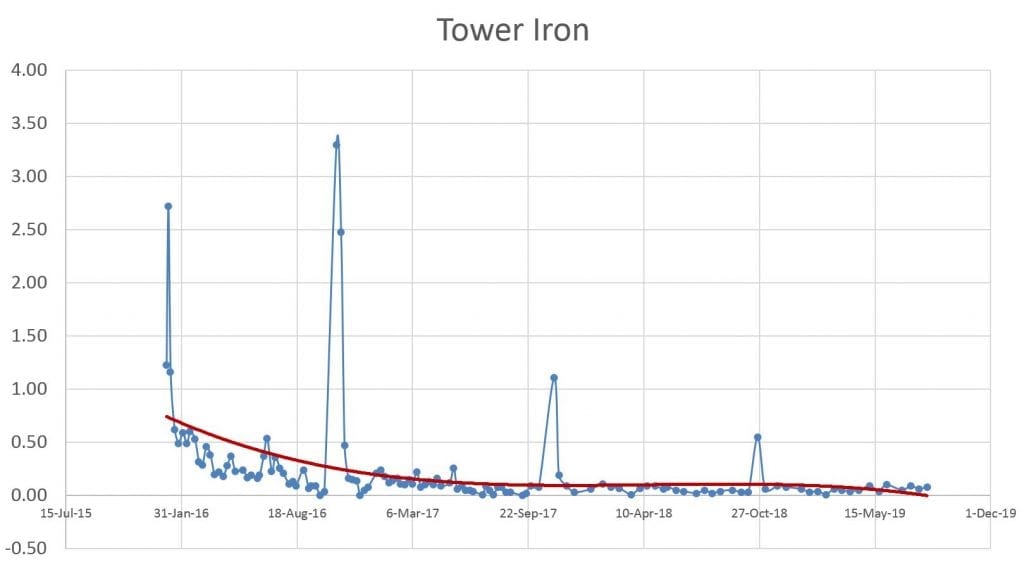
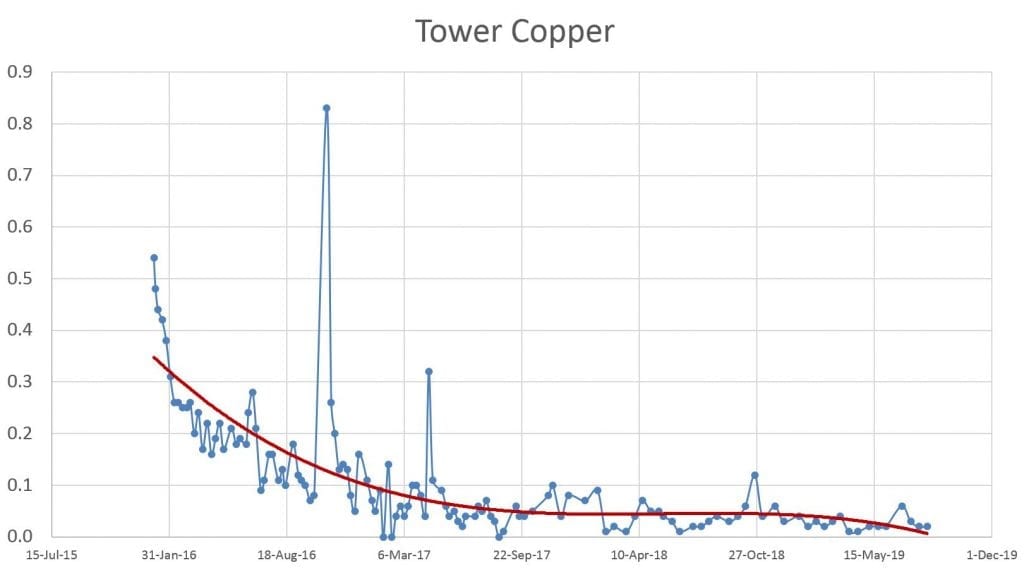
Tower iron and copper levels have declined steadily since ChemTreat took over at this facility in late 2015, indicating the plant’s critical assets are being protected.
Increased reliability
- Longer turnaround time: the plant is moving from a yearly turnaround to a two-year turnaround cycle, resulting in decreased operational costs.
Improved profitability
- Increased throughput
- Improved efficiency
No calcium phosphate or zinc deposits
- Scorching hot, low-flow bundles open clean
Results are examples only. They are not guaranteed. Actual results may vary.
Contact us to learn more about FlexPro and how ChemTreat can help you improve the water treatment at your facility.
